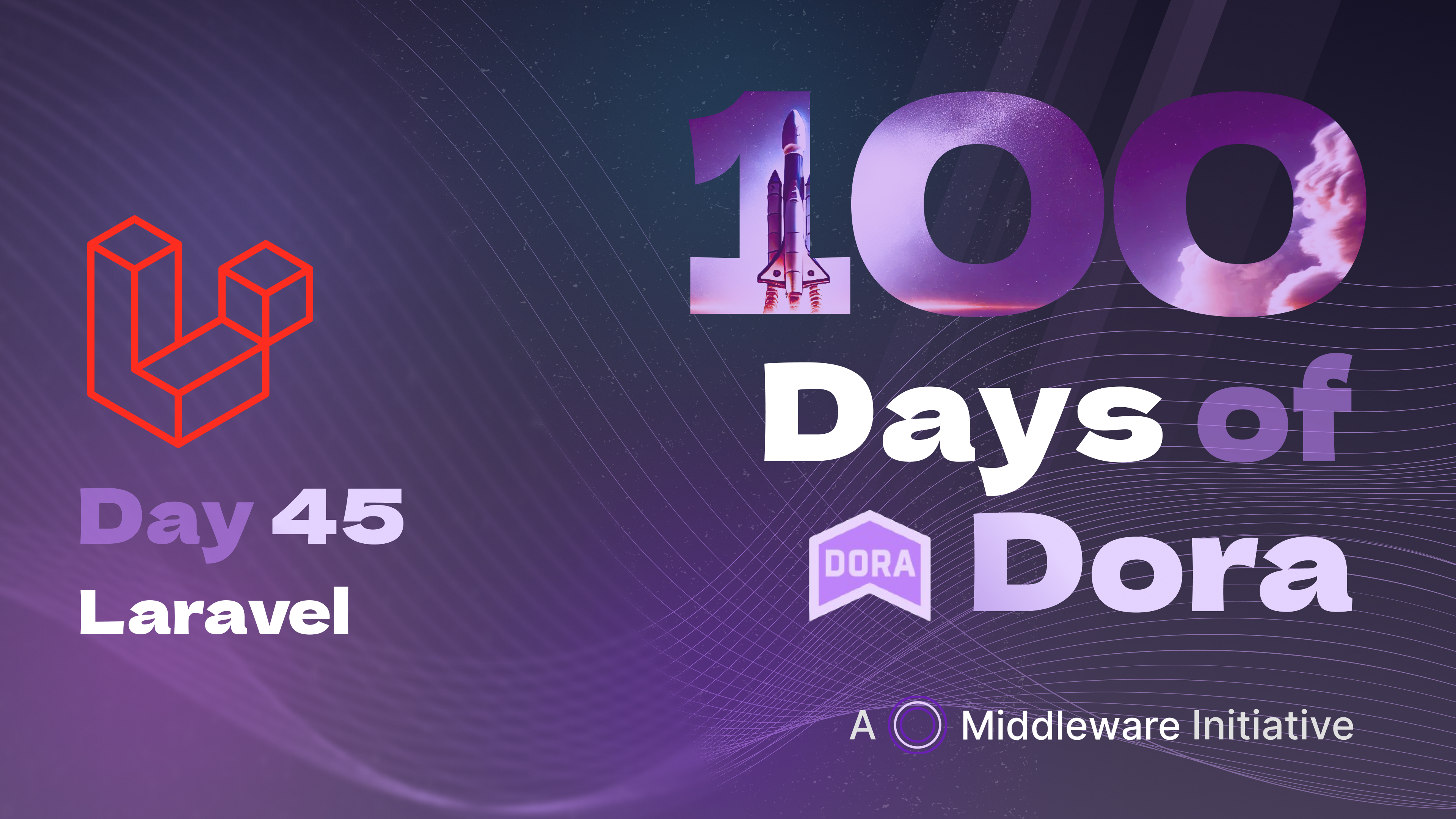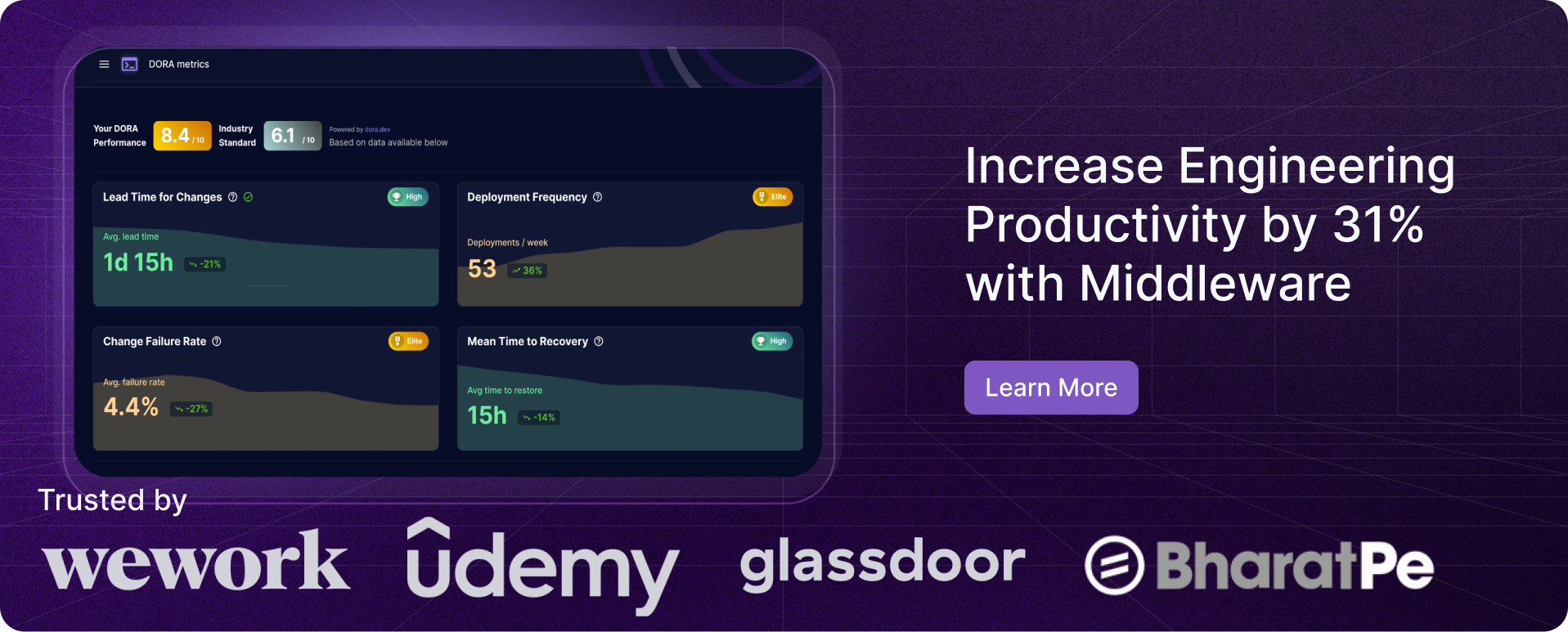Great Merged PRs, Awesome Cycle Times – Laravel’s Engineering Pipeline in Full Swing
 Rajni Rethesh
Rajni RetheshTable of contents
- What are Dora Metrics?
-
- Frequent Deployments? Check.
- Fast and Thoughtful Feedback
- Quality and Balance in Contributions
- Recent Feature Highlights
- Laravel Dora Metrics: A Pipeline Worth Celebrating
- How Can They Leverage Their Strengths and Maintain the Momentum?
- 1. Double Down on Quick Feedback Loops
- 2. Reward and Recognize Contributors Publicly
- 3. Lean into Documentation as a Growth Lever
- 4. Prioritize Contributor Experience with Tooling & Process Optimization
- 5. Balance Quality with Speed Using Modular Releases
- 6. Cultivate a Strong Community Culture
- Keep the Momentum Rolling
- To Wrap UP: Great Merged PRs, Awesome Cycle Times – Laravel’s Pipeline in Full Swing
- Did you know?
- Further Resources

Building a feature-packed e-commerce site or a sleek portfolio website?
Or maybe you’re a seasoned PHP developer searching for a framework that makes life easier without compromising performance.
Laravel is exactly what you need.
Known for its elegant syntax and powerful tools, Laravel handles the heavy lifting—like user authentication, routing, and database management—so you can focus on what matters: creating an amazing product.
Whether it’s a small side project or a complex web app, Laravel equips you to build faster, smarter, and with fewer headaches along the way.
I was keen to dig deeper into their software delivery metrics and see how their repository works. So, we used Middleware OSS which would help in understanding their Dora Metrics.
What are Dora Metrics?
Dora metrics are key performance indicators that measure software delivery efficiency and team performance through four key metrics: Deployment Frequency, Lead Time for Changes, Change Failure Rate, and Mean Time to Recovery (MTTR).
Also read: What are Dora Metrics? - Master DORA Metrics to Master World Class Software Delivery Processes
Laravel Delivering Excellence: A Deep Dive into Their Software Delivery Pipeline
If you’ve ever wondered what a high-performing software delivery pipeline looks like, then look at Laravel. Their numbers for the past few months tell a compelling story.
With over 200 pull requests (PRs) merged monthly—peaking at 241 in September—they aren’t just meeting industry standards; they’re crushing them.
According to the 2023 State of DevOps report, these metrics are well within the benchmark for elite teams. But what really stands out is how this small but mighty community of 655 contributors is running the show.
Frequent Deployments? Check.
The sheer volume of merged PRs—averaging over 200 per month—screams efficiency. Frequent deployments like this are often a nightmare to manage, but the team here makes it look effortless. It’s not just about pushing code; it’s a testament to smooth collaboration and tight process alignment. Contributors like lewislarsen #52112 and hafezdivandari, #52098 play pivotal roles in keeping things on track, delivering updates without delay.
Fast and Thoughtful Feedback
One of the most impressive metrics is their First Response Time, consistently under 12 hours. That’s no small feat! Quick feedback means faster fixes, more polished features, and fewer bottlenecks. Timely responses ensure contributors stay motivated and revisions happen while ideas are still fresh. When you can merge over 200 PRs a month and maintain that kind of speed, you're not just doing well—you’re setting a gold standard.
Quality and Balance in Contributions
It’s not just a code sprint—there’s a careful balance in the type of work coming through. With 35% focused on documentation, 30% on bug fixes, 25% on feature enhancements, and 10% on testing, the team is covering all their bases.
PRs like PR #9756 by HajMo, which involved documentation improvements, reflect a deep commitment to making the project accessible and well-maintained. It’s easy to overlook documentation in fast-moving projects, but they’ve made it a priority, ensuring everything stays well-documented and clear.
Recent Feature Highlights
The new 'Success' Console Component #52112 by lewislarsen, is a perfect example of thoughtful innovation—enhancing user interaction and streamlining workflows. Meanwhile, felixbessler’s addition of recursive config replacements #52087 shows how they’re not just fixing problems; they’re proactively improving tools for future scalability. Even seemingly small updates, like Ma-ve’s support for threaded Slack replies #94, indicate that the team values seamless communication.
Laravel Dora Metrics: A Pipeline Worth Celebrating
The Change Failure Rate sitting at or below 0.84% and an MTTR consistently close to 0 reflect extraordinary reliability. It’s hard to overstate how rare it is to see such low failure rates and rapid recovery times, even with much larger contributor bases. Their delivery process is smooth, efficient, and built for scale—a dream for any engineering manager.
With contributors tackling everything from documentation to feature work, they’ve achieved what many only aspire to: a high-functioning software delivery pipeline that’s both fast and stable. This isn’t just a team that meets expectations—they redefine them.
Also read: Ceph Repo Dora Metrics: Solid Deployments, but First Response and Merge Times Are Dragging
How Can They Leverage Their Strengths and Maintain the Momentum?
Delivering at this level is no small feat, but the real challenge lies in sustaining the momentum. With over 200 PRs merged monthly, lightning-fast first responses, and a remarkably low change failure rate, they’ve built a delivery pipeline that others envy. So, how can they keep the gears running smoothly and even step things up? Here’s a strategy that builds on their existing strengths.
1. Double Down on Quick Feedback Loops
With First Response Times under 12 hours, they’ve nailed the art of timely feedback. To sustain this, they could consider automating initial triage—using bots to assign reviewers and suggest quick fixes where possible. This keeps the human reviewers focused on meaningful tasks without sacrificing the speed contributors are used to.
💡 Idea: Introduce community-driven “response squads” to ensure round-the-clock responsiveness. Rotating shifts or volunteer groups could share the load during peak times.
2. Reward and Recognize Contributors Publicly
Maintaining a contributor base of 655 people takes effort. A little recognition can go a long way in keeping them engaged. They can implement leaderboards highlighting top contributors across categories (like PRs merged, bugs fixed, or features added).
💬 Shoutout Fridays on Slack: Recognize contributors like lewislarsen and felixbessler for impactful work such as the console component #52112 and recursive config management #52087 .
3. Lean into Documentation as a Growth Lever
Since 35% of contributions involve documentation, this is a core strength. Good documentation attracts new contributors and eases onboarding. They could introduce incentives for first-time documentation PRs, making it easier for new developers to get involved and feel like part of the community.
📚 Stretch Goal: Host regular “Doc-a-thons” to clean up, expand, and optimize documentation, like HajMo’s work in PR #9756. This will ensure the project stays accessible as it grows.
4. Prioritize Contributor Experience with Tooling & Process Optimization
To keep the PR flow smooth, it's essential to maintain efficient tooling. Contributors already excel in submitting feature-rich updates like threaded Slack replies (#94). By investing in CI/CD optimizations, they can reduce waiting times between PR submissions and builds.
⚙️ Next Step: Identify bottlenecks in the current process and introduce more automation for repetitive tasks like code style enforcement or dependency checks.
5. Balance Quality with Speed Using Modular Releases
With a change failure rate under 1% and zero downtime, quality is clearly a priority. However, maintaining this level of performance while scaling up requires modular feature releases. Breaking large features into smaller, manageable components helps sustain fast deployment cycles without overwhelming the system.
🔄 Pro Tip: Use feature flags to test new features like Slack-threaded replies (#94) in isolated environments before a full rollout. This way, they maintain agility without risking stability.
6. Cultivate a Strong Community Culture
Having a small but engaged contributor community is a massive advantage. To maintain this, it's crucial to nurture relationships between contributors through community events—virtual meetups, hackathons, or AMAs with project leaders. Creating personal connections makes contributors more likely to stick around.
🛠 Suggestion: Implement mentorship programs where experienced contributors like Ma-ve or lewislarsen guide new joiners through their first few PRs. This will create a virtuous cycle of engagement and retention.
Also read: Swift Package Manager Dora Metrics: Swift Cycle Times, But Updates Could Be Swifter
Keep the Momentum Rolling
They’ve built a stellar pipeline, but the secret to keeping it running smoothly lies in reinforcing their strengths while minimizing burnout. By focusing on quick feedback, community engagement, efficient processes, and modular releases, they can not only maintain but even exceed their current performance. With the right tweaks, this team has everything it takes to remain a shining example of how software delivery should be done.
Momentum isn't just about speed—it's about sustained excellence, and with the foundation they've laid, the sky’s the limit.
To Wrap UP: Great Merged PRs, Awesome Cycle Times – Laravel’s Pipeline in Full Swing
Laravel’s software delivery pipeline is firing on all cylinders. With an impressive pace of PR merges, lightning-fast response times, and a change failure rate that’s practically non-existent, their team shows what it means to excel. This isn’t just about meeting industry benchmarks—they’re setting new ones.
With a dedicated community driving frequent deployments and continuous improvements, Laravel has created a pipeline that others can only dream of. And the best part? They’re showing no signs of slowing down. As long as they continue building on their strengths—rewarding contributors, refining processes, and fostering collaboration—Laravel’s momentum will remain unstoppable.
If you find these learnings interesting, we’d really encourage you to give a shot at Dora metrics using Middleware Open Source. You could follow this guide to analyze your team or write to our team at productivity@middlewarehq.com with your questions and we’ll be happy to generate a suggestion study for your repo — free!
Did you know?
Laravel was created by Taylor Otwell in 2011. He wanted to provide a more elegant framework than CodeIgniter, which didn’t support built-in authentication features.
Further Resources
Subscribe to my newsletter
Read articles from Rajni Rethesh directly inside your inbox. Subscribe to the newsletter, and don't miss out.
Written by

Rajni Rethesh
Rajni Rethesh
I'm a senior technical content writer with a knack for writing just about anything, but right now, I'm all about technical writing. I've been cranking out IT articles for the past decade, so I know my stuff. When I'm not geeking out over tech, you can catch me turning everyday folks into fictional characters or getting lost in a good book in my little fantasy bubble.
